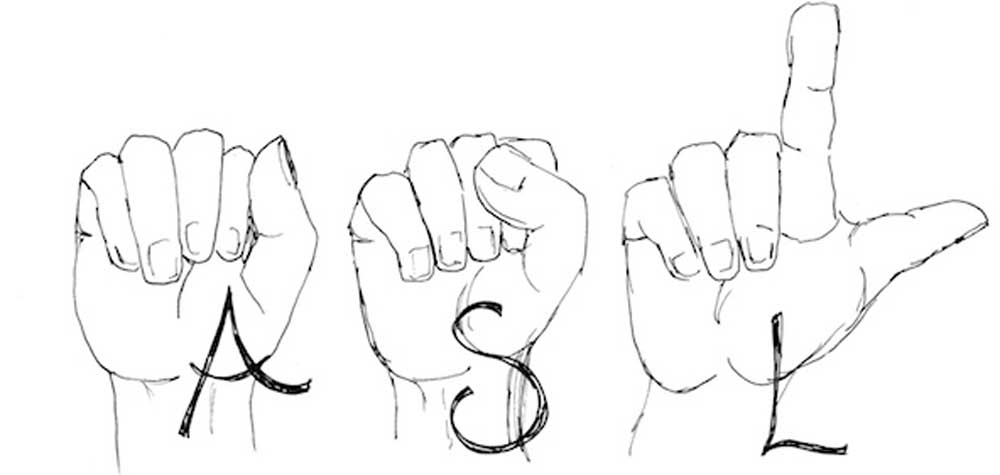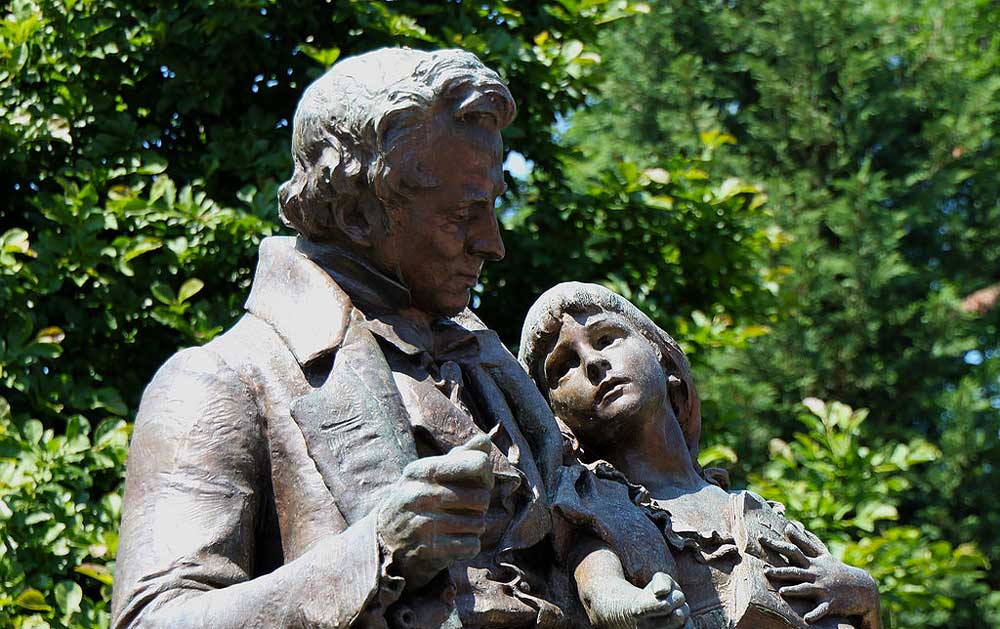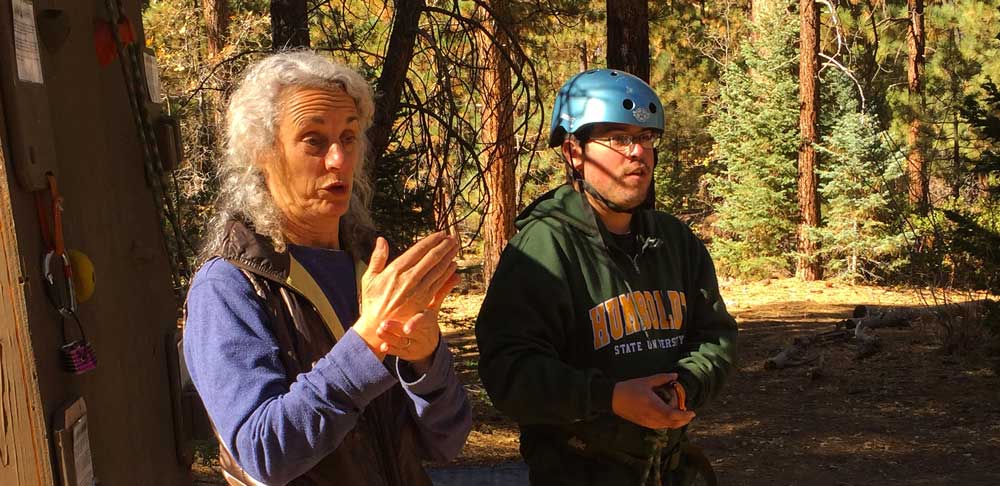How do you teach science to a deaf student if sign language doesn’t have a way to sign the word?
Science is its own language with all the varying terms ranging from photosynthesis to camouflage to crepuscular. Teaching science through American Sign Language (ASL) adds to the challenge because it has never developed standardized vocabulary for many of the technical terms that exists in Science, Technology, Engineering, and Mathematics (STEM) fields of study. There is a process in place now that works to fix this problem, but first, it is good to know and understand the origin of ASL itself.

American Sign Language Origination
 In the United States, Sign Language didn’t begin to develop until about 1814. It’s all thanks to a man named Thomas Hopkins Gallaudet, a minister who had a neighbor with a young daughter who was deaf, named Alice Cogswell. He wanted to learn the best ways to educate Alice, so he did that by heading to Europe where there was already deaf education underway. Gallaudet studied under deaf educators at the National Institute for Deaf-Mutes in order to learn all that he could.
In the United States, Sign Language didn’t begin to develop until about 1814. It’s all thanks to a man named Thomas Hopkins Gallaudet, a minister who had a neighbor with a young daughter who was deaf, named Alice Cogswell. He wanted to learn the best ways to educate Alice, so he did that by heading to Europe where there was already deaf education underway. Gallaudet studied under deaf educators at the National Institute for Deaf-Mutes in order to learn all that he could.
Next step was to ask one of his educators, Laurent Clerc, to join him in the United States, and in 1817 the American School for the Deaf opened. Deaf students from across the US came to the school bringing with them signs they used at home, which, along with French Sign Language (what Gallaudet learned in Europe from Clerc) is how we achieved American Sign Language as it is today. This is how one man was able to draw from several resources to develop a language and education system for deaf students in just a few years.

Statue of Thomas and Alice in Hartwell, CT.
Adding Science Words Through Collaboration
Now, let’s get into the science of how this language is still growing and adapting. The University of Washington has an ongoing project called the ASL-STEM Forum: “The Forum is an attempt to connect you, all of the ASL users of North America, together so that you can, of your own accord, introduce the necessary [standardized] vocabulary to your [STEM field] language.” This is a website set up in 2009 for users to post videos of the common signs they use for STEM related topics. Once they are posted, the community of users are able to vote on signs and the most popular one for a topic is the one commonly adopted by school and educators at places like Gallaudet University.
This allows the deaf and hard of hearing community to hold the creation of this language in their hands while creating potential uniformity for science educators/students/interpreters. Before an online forum such as this, interpreters and scholars would work together to go over the tricky words and phrases to be encountered within a class; sometimes adding hours of class preparation to their study time.
High Trails Interpretive Experiences
Here at High Trails we have had this happen in the form of students with interpreters. I was grateful to talk with Polly Ostgaard, an interpreter who has been at High Trails recently, on this topic. I asked Polly about what she had to do to prepare for her time here at High Trails. Since our class content is based upon elementary curriculum, this lower level of complexity allows her to quickly review concepts and vocabulary before class to make sure she’s ready.

A little easier than strict science, but still a workout for interpreter Polly. And try signing “on belay”…
In another setting, such as a college level, she would ask for materials from professors or ask other interpreters/instructors in the area what signs are typically used within that setting well ahead of actual class time. Polly has actually made use of the ASL-STEM Forum, but since it’s also a pretty young project she uses other websites such as Sign Savvy to help her prepare. She says that her biggest challenge has been grasping and holding the attention of her student, a problem that most school teachers encounter on a regular basis.

When asked about how/what she uses for signs for the science vocabulary we present here at High Trails, Polly said she always finger spells the words out first so that her student gets that spelling.
After that, Polly uses her judgment on how to best sign the word based off its meaning. So for photosynthesis, she would finger spell then use the signs for “light,” “change” and “green.” She did similar signs for words such as chlorophyll and chloroplast. For crepuscular, after finger spelling, Polly would sign “sunset,” “sunrise,” and “active.” Camouflage was relayed through the signs of “match,” and “environment.” However, Polly was clear, that if you want a true full picture painted for you through ASL for any terms you may come across, the best way is to find an instructor who is deaf themselves and grew up with their first language being ASL.
Here’s the author Sarah signing the word photosynthesis using this strategy:
Overall, American Sign Language still has a long way to come in terms of the STEM field signs. It’ll take time, dialogue, and community involvement before a collection of signs are chosen to be used nationwide. For those that don’t have a hand within the ASL community, we can help by being aware that these things take time, so when we’re teaching deaf or hard of hearing students we should do our best to help interpreters ahead of time to be fully prepared to help both them and their student to be successful. We’re able to help them prepare by giving them material ahead of time to look over, giving insight into the meaning of more difficult science terms, and speaking clearly and deliberately. With some forethought and preparation, every student at High Trails can have a great learning experience. Thanks, Polly!
Sources:
- https://www.startasl.com/history-of-american-sign-language_html
- https://aslstem.cs.washington.edu/info/about
- http://www.nytimes.com/2012/12/04/science/sign-language-researchers-broaden-science-lexicon.html
- https://www.signingsavvy.com
- Polly Ostgaard
At High Trails Outdoor Science School, we literally force our instructors to write about elementary outdoor education, teaching outside, learning outside, our dirty classroom (the forest…gosh), environmental science, outdoor science, and all other tree hugging student and kid loving things that keep us engaged, passionate, driven, loving our job, digging our life, and spreading the word to anyone whose attention we can hold for long enough to actually make it through reading this entire sentence. Whew…. www.dirtyclassroom.com

Comments are closed.